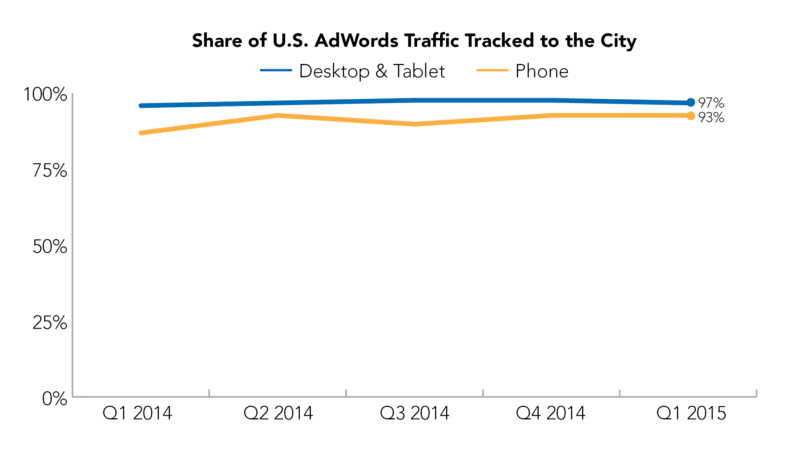Content marketing and search engine optimization (SEO) are both titans of modern marketing, yet they’re not spoken about in the same conversation often enough.
In this article, I will take a quick look at content marketing and SEO and then detail how you can integrate these two approaches to supercharge your results from each approach.
What is content marketing?
The Content Marketing Institute defines content marketing as follows:
Content marketing is a marketing technique of creating and distributing valuable, relevant and consistent content to attract and acquire a clearly defined audience — with the objective of driving profitable customer action.
There are a few moving parts here. Typically, content created and promoted will help the reader in some way, and, in some instances, it will be purely for entertainment.
Red Bull does a great job with entertaining content marketing by aligning themselves with lots of high-octane sports. A great example is Red Bull Stratos, where
Felix Baumgartner parachuted to earth from space. This is pure entertainment, yet it is well aligned with the brand.
For the average business, the content you publish is likely going to be a little more practical and related to the pains, gains and jobs that your target customer wrestles with.
At Bowler Hat, we help businesses with SEO and digital marketing, so we tend to publish content that helps people improve their SEO. We are talking mainly to business owners and in-house SEOs.
This exposure helps us demonstrate our expertise and build relationships with companies that we can help. It’s marketing, but, in a nice and non-sales-focused way. It’s marketing that feels good and not pushy.
What is SEO?
I am going to assume that most Search Engine Land readers will be satisfied with that, as they probably are quite familiar with SEO, but there is a more detailed definition
here if you’d like one.
While the definition above works for our purposes, all too often we see
small business SEOs concerned only with ranking for the big and obvious commercial terms. This is inarguably important, but because everyone wants to rank for the big obvious terms, this can be super-competitive, both in the organic results and within the paid placements.
Where content marketing on search engines can be most helpful is when it puts you in front of customers before they are comparing potential suppliers. Establishing contact with a potential customer at this point gives you a chance to illustrate your credibility and generate leads earlier in the buyer journey. This type of helpful thought-leadership content is also one of the easier types to promote, so it can help you
build links that can naturally improve your rankings on those coveted commercial terms.
Content marketing & SEO
Marketing is all about being in
the right place at the right time. And in 2017, when people have a question, they typically ask it on one of the major search engines (well, mostly Google).
Yet many content marketing efforts rely on social media or email to get the message out there. These channels can be powerful. But they rely on the hope that your social post, ad or email gets in front of a prospective customer at just the time when they are looking for your products or services. Sure, targeting has gotten more sophisticated, but it doesn’t really compare to search engine marketing, which works so well because we know our listings are seen right when people are searching for that information.
Having your content found by prospective customers on Google is the holy grail. It is your content at the right place and the right time. It is truly scalable, and when it comes organic listings, it doesn’t come with a cost per click.
How to get your content marketing found on Google
You have two basic options here:
- Publish on a highly authoritative site where the content will naturally rank well.
- Build the authority of your own site and your published content.
Option #1 is fairly self-explanatory As an example, I recently published an article on
ways to measure the success of SEO right here on Search Engine Land. I focused on keywords that were variations on “SEO KPIs” and “measuring SEO,” and the article naturally ranked from first to third for the majority of these terms.
Now, it was an informative and well-researched article (blowing my own trumpet here) that I felt was better than anything else out there. It was also published on an authoritative and highly relevant site. No link building or anything else was needed. The content itself and the authority of the site it was placed on were enough for that article to rank well.
Option #2 is a little harder, as your site is isn’t likely to be nearly as authoritative as an established site in its niche. So, you have a few jobs to do here before you can get content on your own site to rank.
First, you absolutely, positively need to get the
SEO basics dialed in. Then you need to build authority for your overall site (domain authority). And you will need to promote those articles individually (page authority).
Both of these approaches have merit. Publishing on third-party sites is faster, easier, and lends you credibility. Driving people to your own site is powerful for brand awareness, and you have more control of the next steps (remarketing, lead generation, email, social and so forth).
Both approaches require you to make an
investment and to be consistent — but what worthwhile marketing does not?
How SEO supercharges content marketing
This is fairly obvious. When your content ranks well organically, you get free exposure in the natural search results. This improves brand awareness, drives engagement with your business and helps set more people on the pathway to
profitable customer actions.
Your content appears in the right place at the right time with no associated cost per click. That’s some marketing gold right there.
How content marketing supercharges SEO
What kind of outbound links do you personally click? I am not talking about internal navigation, but rather the links that take you from one site to another.
Typically, these are links within the body of an article. If I were talking about
Google PageRank, I would likely link to the Wikipedia PageRank page to provide more detail. This link enriches and improves the linking page and provides a useful resource and direction for the reader. And sure enough, informational resources like Wikipedia have millions of links. All without doing any SEO.
Now, most businesses are not Wikipedia, and this is not “Field of Dreams.” So, we can’t just build it and wait for the links to come. We must promote the content when it is created. Outreach, guest posts and digital PR are your allies here, and you can supplement these efforts with some paid promotion and content amplification.
The best approach here is to identify well-linked content in your sector, and then create an improved version of that content. This way, if you keep a list of who linked to the original content, you have a great place to start for initial outreach. And you are also armed with the knowledge that what you are promoting is worthy of those links — which is central to this whole approach.
In the simplest terms, content marketing supercharges your SEO by making link building easier.
SEO vs. content marketing
We see this antagonistic mentality all the time in digital marketing.
SEO vs. PPC.
Local SEO vs. Organic. SEO vs. Content Marketing. SEO vs. Social.
Smart digital marketers don’t think like this. All channels have a part to play, and the best strategies are often those that
strategically integrate channels in a way that they support each other.
This is certainly the case with SEO and content.
- SEO helps get your content and business in front of more people.
- Content marketing helps you build authority and improves your SEO.
Think integration rather than silos, and all your marketing will thank you for it.
SEO & content marketing strategy
So, to quickly summarize here, we have the following strategy to help drive more traffic to the content on your own site.
1. Create great content
2. Promote that content with:
- outreach
- digital PR
- guest blogging
Strategically this is relatively simple. You need to be realistic and patient. If your content ranks well in organic search, it can be a huge win — but it won’t be quick or easy. This is marketing that shoots for the moon!
SEO & content marketing caveats
This approach will not be right for every business or every situation.
If you are a small local plumber looking to pick up several new customers each week, then the effort to produce plumbing content that ranks highly in Google is likely not worth your time. You would be better served by doing some
PPC, SEO and
local SEO. You may also be able to use a more targeted approach to content marketing using social media advertising.
If you have a scalable business model and are not geographically bound, then nothing is going to be more scalable than a combined content marketing and SEO strategy. You will be able to drive more awareness and engagement — without rapidly scaling costs — as you reach a more diverse and geographically broad audience.
Remember that
SEO is not always the right approach if the objectives, budget or time scales say otherwise. But if you don’t get started now, you will fall ever farther behind, and when SEO and content is a good fit, it is hard to beat.
 Building, growing and maintaining an in-house search marketing team can be a challenge for any organization.
Building, growing and maintaining an in-house search marketing team can be a challenge for any organization.


















